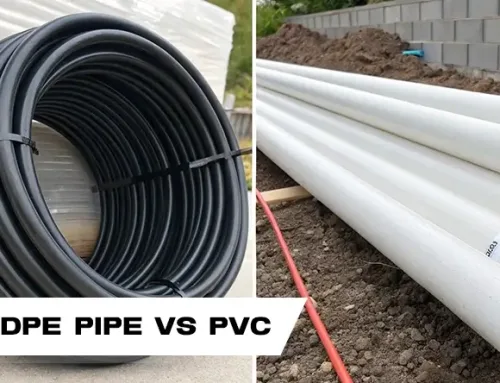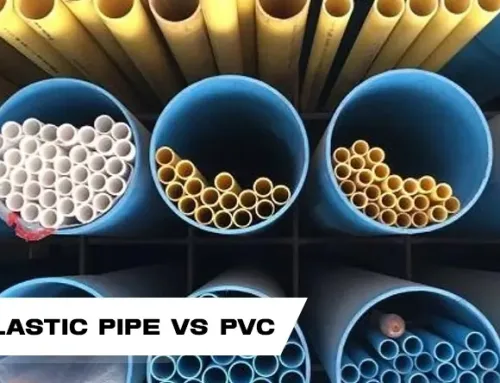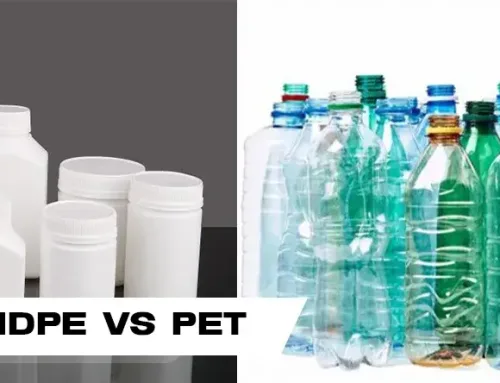Extruded Polystyrene (XPS) is one of the efficiency foam insulation products widely recognized because of its great performance, adequate durability, and improved thermal insulating properties. It is an important product utilized in modern building techniques, specifically in energy-saving and sustainable construction. XPS insulation is among the main driving factors behind decreasing the overall building energy consumption and thus lowering running costs and emissions of greenhouse gases in the future.
Pro produced through a constant extrusion process, XPS retains a uniform, closed-cell composition which grants it some performance advantages. Compared to other forms of Extruded polystyrene insulation, such composition inhibits air and water penetration, playing a significant role in the material’s capacity to insulate. Through its uniform hardness and density, XPS offers a consistent thermal barrier which performs effectively under varying environmental conditions.
Having an R-value of around R-5 for each inch of thickness, XPS insulation boards are among the top performing materials in energy-efficient construction. It is this high R-value in addition to their high compressive strength, water resistance, and long-term thermal performance that makes them the go-to material for the insulation of building envelopes, i.e., walls, below-grade foundations, floors, and roofs. They have a competitive advantage over other materials like fiberglass batts or Expanded Polystyrene (EPS). All these properties make XPS an insulation material of choice in residential and commercial construction, where long-lasting and dependable performance are of the essence.
What is Extruded Polystyrene (XPS)?
The combination of Extruded Polystyrene is then forced through a shaped die and blown into foam and a continuous sheet of insulation with a closed-cell, uniform structure. This creates a dense, tough, and water-resistant product well adapted to construction application where thermal performance and durability are of top importance. It works as a uniform vapor and moisture barrier, significantly reducing the chance of water absorption. This provides XPS a particularly good application in below-grade construction, such as basement foundations and walls, where moisture is prevalent. Under wet or humid conditions, even, XPS does not become compromised in terms of thermal resistance and structural strength over time, unlike other materials used for Extruded polystyrene insulation that degrade.
Thermally, XPS is highly efficient with poor thermal conductivity and a consistent R-value of around R-5 per inch. Its excellent insulation capability makes it effective in minimizing heat transfer and assisting heating and cooling systems in keeping interior comfort at lower energy input. Compared to Expanded Polystyrene (EPS), the tighter structure of XPS permits superior moisture resistance, compressive load, and heat resistance. With EPS being less expensive in every respect other than that, the more stressful environment nevertheless demands superior performance, which is what the XPS product deliver,s for which it is best utilized as premium-grade insulation.
Typical Extruded polystyrene uses include perimeter insulation, flat roofs, floor slabs, and cold storage warehouses—wherever a combination of thermal performance, structural stability, and moisture resistance is required.
Key Properties and Benefits of XPS
Extruded Polystyrene (XPS) insulation is widely praised for its combination of thermal efficiency, moisture resistance, strength, and ease of fitting. These characteristics make a significant contribution to its popularity in domestic and commercial construction, particularly where long-term performance and energy efficiency are the issues.

High Thermal Resistance (R-Value)
One of the most noteworthy features of XPS is that it has a high, steady R-value that typically measures around R-5 per inch extruded polystyrene insulation thickness. Its excellent thermal resistance properties make XPS a very effective heat transfer barrier, minimizing energy loss across the building envelope. Whichever the application—walls, roof systems, or under concrete slabs—XPS insulation plays a critical role in providing steady indoor thermal comfort year-round—heating interiors in winter and cooling them in summer. This translates into decreasing and decreasing energy consumption over time for heating and cooling, which translates to cost savings and less environmental footprint.
Exceptional Moisture Resistance
As a result of its closed-cell structure, XPS absorbs very little water. This makes it an ideal material to be used in wet conditions, including basements, below-grade foundations, and exterior Extruded polystyrene insulation systems. Its resistance to mold and mildew also makes it more desirable in wet conditions, providing a clean and consistent insulation solution.
High Compressive Strength and Structural Integrity
Extruded Polystyrene is also marked by excellent compressive strength of between 15 and over 100 psi depending on the grade of product. Its mechanical strength means it is in great demand to be used structurally to bear loads such as beneath concrete slabs, inverted roofs, and around foundations’ perimeters. XPS insulation will not readily deform under intense pressure, and the product will remain functional irrespective of the unfavorable structural circumstances. Its resistance to freeze-thaw offers a further level of durability, resisting damage or cracking in regions of extreme seasonal temperature variation.
Lightweight and Easy to Install
It is easy to cut, shape, and use on-site and is an economic choice for quick and efficient installation. Its ease of use is of value to contractors since it reduces labor time and installation Extruded polystyrene price.
The Extruded Polystyrene boards are manufactured in standard sizes with interlocking edges, ensuring secure fits that reduce thermal bridging and air leakage.
Long-Term Value and Cost Efficiency
Extruded Polystyrene insulation is known for its long service life, often lasting decades without a significant drop in performance. Its combination of thermal efficiency, moisture resistance, and structural strength means it can deliver ongoing value well beyond the initial installation. When factoring in reduced maintenance, energy savings, and durability, XPS emerges as a cost-effective insulation solution for a wide range of building types and climates.
Applications of Extruded Polystyrene
Extruded Polystyrene is the most versatile and globally applied insulation product in a vast array of markets. With high thermal resistance, moisture resistance, and structural capacity, its benefits are found invaluable in an immense variety of building, industrial, and specialty markets. Ranging from housing developments to big structures and cold storage warehouses, XPS offers predictable performance and efficiency in every scenario.
Construction Applications
Wall Insulation: Extruded Polystyrene has universal applications in external wall insulation systems due to its low lambda value and exceptional resistance to penetration by water. It is specifically suitable for domestic or commercial construction and can be utilized in rainscreen cladding systems, cavity walls, or EIFS External Insulation Finishing Systems. Application of XPS guarantees reduced thermal bridging, enhanced airtightness, and significantly better building energy efficiency overall.
Roofing Insulation: Extruded Polystyrene is applied as a high-performance insulation course beneath waterproof membranes in roofing use. It is especially common to use over flat or low-slope roofs where insulation needs to be installed above the structural deck. XPS boards exhibit adequate weathering and compression resistance, which minimizes heat gain in warm climates and heat loss in cold climates. It also maintains performance under freeze-thaw cycles, which qualifies it for use in exposed or inverted roof systems.
Foundation Insulation: Extruded Polystyrene is a prime choice for foundation and below-grade wall insulation, where moisture control is critical. Its closed-cell structure excludes water, and thereby retains its insulating performance throughout its lifespan. XPS finds extensive application beneath concrete slab foundations, against basement walls, and in crawl spaces to improve thermal performance and cut energy loss through the ground.

Other than the traditional buildings, Extruded Polystyrene is used in civil engineering and infrastructure. It finds application in:
- Road and Highway Construction: XPS is employed as a thermal insulation and lightfill layer beneath roads, highways, and airfield runways. It prevents frost heave during freezing conditions by preventing the upward expansion of soil. Having a high compressive strength, it can support heavy loads without getting deformed.
- Bridge Decks and Railway Systems: Due to its ability to resist thermal and mechanical stress, XPS is applied on bridge decks and rail beds for stability and thermal fluctuation that leads to structural fatigue reduction.
Cold Storage and Refrigeration
Extruded Polystyrene is more appropriate for cold storage as it possesses low thermal conductivity as well as moisture resistance. It is mostly used in:
- Walk-in Coolers and Freezers: XPS panels help maintain low temperatures stable and reduce the energy required for refrigeration in food processing plants, cold storage warehouses, and distribution centers.
- Insulated Transportation: Its thermal efficiency also makes XPS a suitable application for refrigerated trucks, shipping containers, and mobile cold storage units, where stable internal temperatures are paramount.

Decorative and Special Uses
Because of its even surface, consistent texture, and softness to mold, Extruded Polystyrene is commonly used in:
- Architectural Models and Theatrical Sets: Designers and artists prefer the material for scale models, carved artifacts, and theater sets since it is light to work with and easy to carve.
- Interior Design and Floor Decorations: In some residential construction work, XPS is used as underlayment in floating floor designs or even in custom decorative paneling where design and insulation meet.
One of the most recognized is DuPont™ Styrofoam™ Brand XPS, which has become a benchmark for XPS insulation excellence. With its track record of long-lasting thermal performance and resistance to water entry, this product line is specified in residential construction and on large commercial projects.
Environmental and Sustainability Considerations
Even though Extruded Polystyrene insulation has several benefits, it has some environmental drawbacks too. One such crucial one is that XPS is non-biodegradable and hence may remain in landfills for quite some time unless it is disposed of properly. However, attempts are being made to tackle such problems by going through recycling mechanisms. Certain companies are also trying to make XPS more recyclable, with development focused on converting the material for reuse and reselling in an increasingly circular economy.
Moreover, manufacturers have started using low-GWP formulations, such as DuPont’s grey XPS, which have been designed to reduce the environmental impact during production. These possess different blowing agents with a lower environmental impact compared to traditional systems.
Be cautious when selecting recycled Extruded Polystyrene products because low-quality recycled materials can release harmful gases when exposed to heat or weathering. For health and environmental reasons, always choose well-quality, responsibly produced materials.
How to Choose High-Quality XPS Insulation
It is critical to use appropriate grade products while selecting Extruded polystyrene insulation for a given project. They should include extras like ISO 9001 and ISO 14001 which demonstrate achievement of a quality management and environmental standards. Furthermore, find whether a BBA certificate or similar product specific endorsement is available that guarantees the material’s dependability and performance.
Test the R-value, compressive strength, and moisture resistance of the XPS foam to see if it’s suitable for your specific application. For example, high R-values are critical for energy-efficient construction, while moisture resistance is critical for applications in wet conditions like basements or foundations. Be careful in choosing products made from recycled content since some inferior quality XPS boards can be filled with toxic chemicals or have off-gas emissions. Opt for well-established manufacturers with strict quality control mechanisms to ensure the XPS foam is safe and performs well.
Conclusion
Extruded Polystyrene (XPS) insulation is a high-quality product that provides excellent thermal performance, durability, and flexibility for most uses. Residential through commercial building construction, XPS provides a safe energy-efficient, water-resistant answer for insulation. As the construction sector moves towards sustainable building practices, XPS reduces energy use and contribute its share towards more environmentally friendly buildings.
If you’re considering Extruded Polystyrene for your next project, consult with reputable manufacturers or industry professionals to select the best product for your needs. With its many benefits, XPS remains a top choice for modern, sustainable insulation solutions.







Leave A Comment